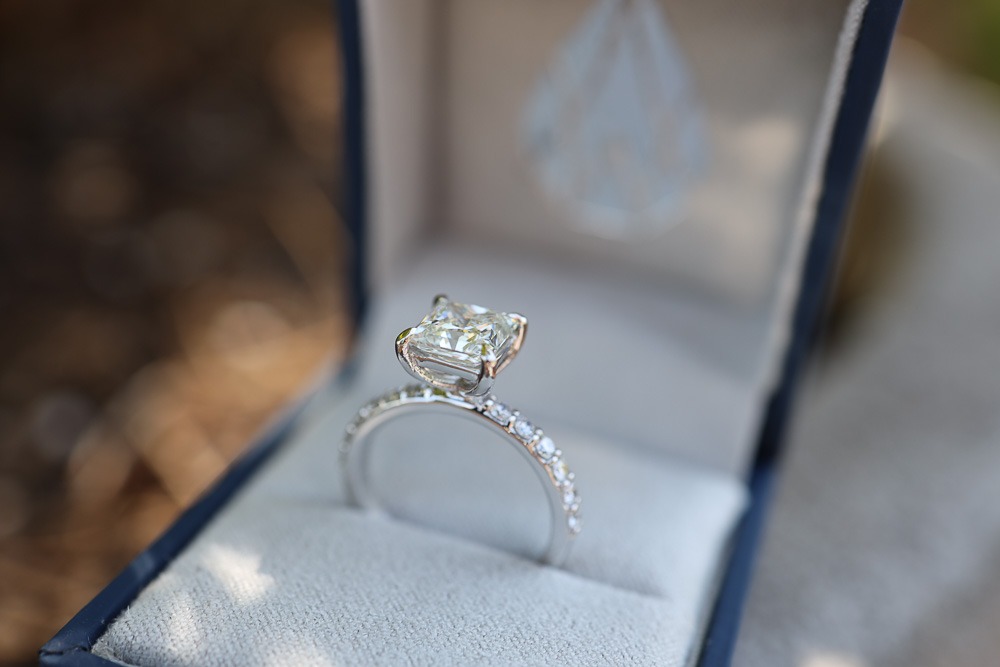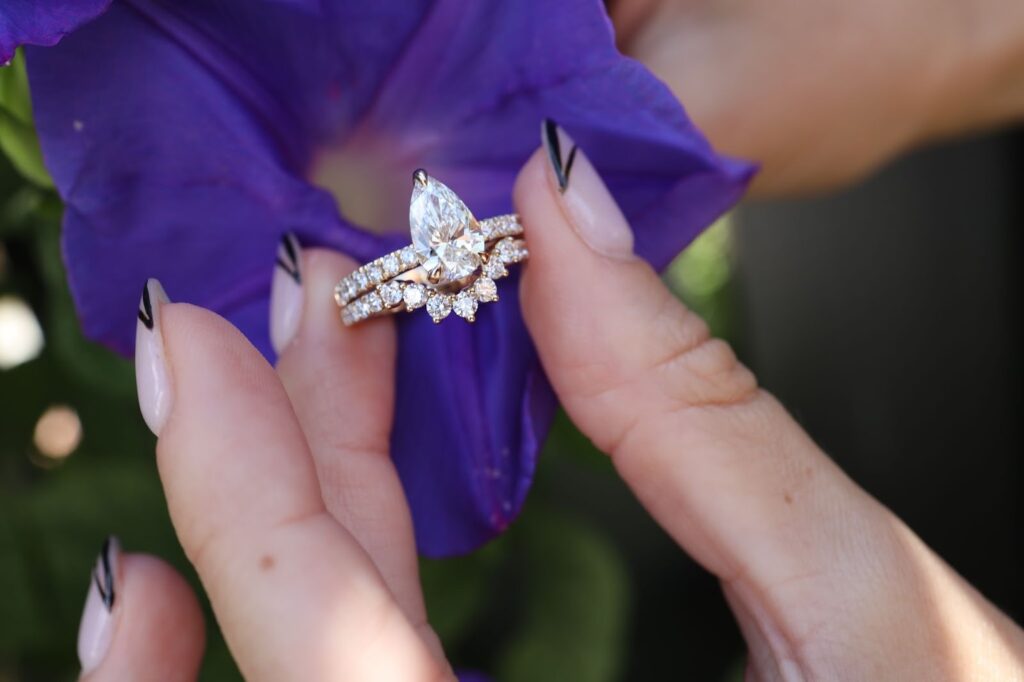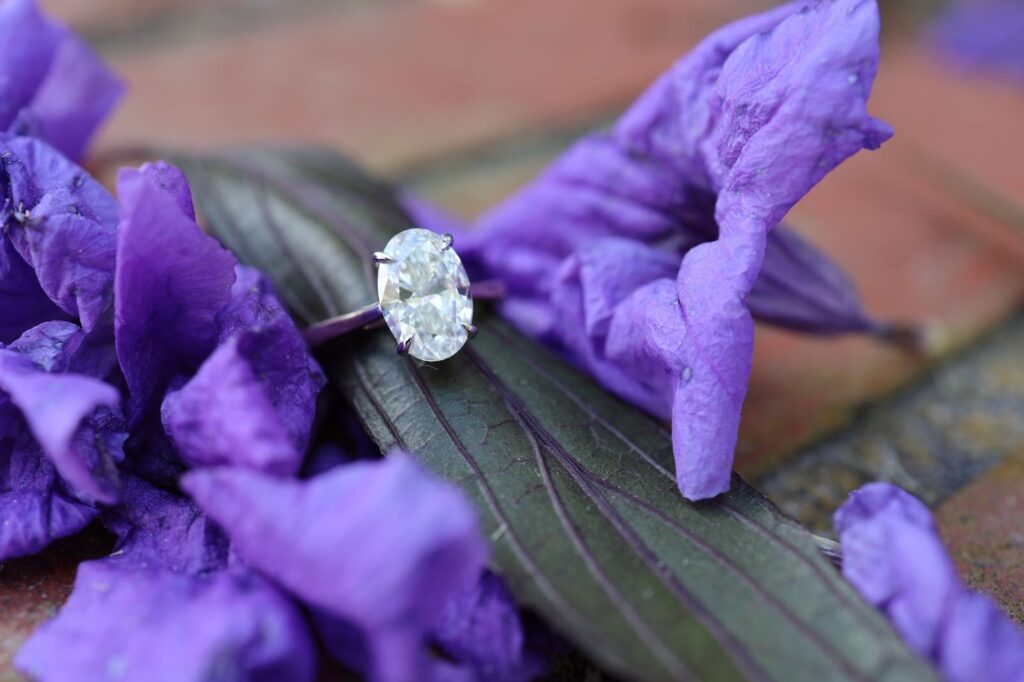lab grown diamonds: There’s a hush before brilliance that quietly pauses when a diamond catches light at AW Jewelry, where heirloom soul meets engineered precision. Whether born deep within the earth or carefully cultivated in a laboratory, every diamond tells a story of time and transformation.
Today, the question isn’t whether lab-grown diamonds are “real.” It’s how they compare to natural diamonds in what truly defines beauty and worth the 4Cs and price.

How Does the Cut of Lab-Grown Diamonds Compare to Natural?
Cut determines how a diamond handles light, its brilliance, fire, and sparkle. With lab grown diamonds, the artistry mirrors natural: precise angles, symmetry, and polish define performance. Because grown rough is created in controlled conditions, cutters have more flexibility to achieve ideal proportions, leading to consistent excellence in cut grades.
Natural diamonds, formed under the earth’s pressure, vary more widely in shape and structure. Some yield exceptional brilliance; others require compromise to preserve weight.
At AW Jewelry, we remind clients: cut isn’t just a technical detail it’s the difference between shimmer and radiance. Whether grown or natural, prioritize cuts first. A perfect cut breathes life into every carat and ensures your diamond performs beautifully in every kind of light from candlelit evenings to morning sun.
How Does Color Differ Between Natural and Lab Grown Diamonds?
Color is the diamond’s tone, the subtle warmth or coolness that shapes its character. Both lab grown diamonds and natural diamonds follow the same GIA color grading scale, from icy D to warm Z.
The difference lies in consistency and price. Lab-grown diamonds often achieve higher color grades more affordably because their formation can be precisely managed. Natural diamonds, shaped by time and pressure, display more variation, and exceptional colorlessness commands a premium.
At AW Jewelry, we help you select tone with purpose. Crisp whites sing in platinum; warmer hues glow softly in yellow or rose gold. Whether grown or mined, the goal is harmony, color that flatters your skin, your metal, and your light.
Are Lab-Grown Diamonds as Clear as Natural on Clarity?
In clarity, both types of diamonds are graded by the same scale from Flawless to Included. But what sets them apart is the kind of inclusions they carry.
Natural diamonds often contain mineral crystals, small feathers, or tiny internal wisps from their time on the earth. Lab-grown diamonds, meanwhile, can show metallic patterns or growth lines from their creation process. Both are unique fingerprints, formed by their origin story.
For most clients, “eye-clean” is the sweet spot of a diamond that looks perfect to the naked eye, even if inclusions appear under magnification. Because of controlled growth, lab-grown diamonds frequently achieve VS or higher clarity grades at a lower price.
At AW Jewelry, we view clarity as personality, the quiet details that make your stone authentically yours. Whether lab-grown or natural, what matters is brilliance you can feel, not flaws you can find.
Do Lab-Grown Diamonds Match Natural Ones in Carat Size and Presence?
Carat measures weight but your eye sees presence. Lab-grown and natural diamonds share identical density, so a one-carat stone looks the same size regardless of origin.
The distinction lies in value. Lab-grown diamonds typically cost less per carat, allowing you to select a larger size or higher quality within the same budget. Natural diamonds of equal carat weight may carry more rarity-based pricing, shaped by geology and supply.
At AW Jewelry, we guide clients to balance carat with proportion. A smaller, perfectly cut diamond can outshine a heavier one with less precision. The goal isn’t just to size its presence, harmony, and the grace of light that feels alive.

How Do Lab-Grown Diamonds Compare to Natural on Overall Price?
This is where the difference becomes clear. Lab-grown diamonds offer significant savings often 60–80% less than natural counterparts of similar 4C grades.
That means your budget can stretch further:
- A larger carat weight without sacrificing quality.
- A higher color or clarity grade within the same price range.
- Room for a custom setting or engraving that personalizes the piece.
Natural diamonds retain value based on rarity and market tradition, while lab-grown pricing reflects accessibility and innovation.
At AW Jewelry, we believe value is measured not only in resale, but in meaning. For some, rarity defines worth; for others, it’s the precision and purpose behind the stone. Our promise to help you find beauty that fits your life, not just your ledger.
Do Lab-Grown and Natural Diamonds Differ in Light Performance?
A diamond’s true charm lives in its light. Both lab-grown and natural diamonds can deliver exceptional brilliance when cut well but their internal growth patterns can subtly influence sparkle.
Lab-grown diamonds sometimes exhibit slightly different “graining,” which can affect how light disperses. However, when proportions and polish are ideal, the human eye cannot distinguish one from the other. In our lighting studies at AW Jewelry, both types show comparable fire and scintillation under natural and artificial light.
If light feels like the soul of your jewelry and for us, it always does, we’ll help you choose the diamond that sings brightest under your light, your life, and your story.
How Does Longevity Compare Between Lab-Grown and Natural Diamonds?
Durability is identical. Both are pure carbon crystals rated 10 on the Mohs hardness scale, the hardest natural material known.
What differs is perception over time. Natural diamonds carry geological rarity; lab-grown diamonds carry modern innovation. Both can become heirlooms if cared for properly. We advise cleaning with mild soap, gentle brushing, and regular inspection for prong security.
At AW Jewelry, we call it “Promise Care” ensuring your diamond, whatever its origin, remains luminous through every season of life. Whether mined or grown, your diamond is strong enough to last generations; it’s the memory behind it that makes it eternal.
Which Is the Wiser Investment: Lab-Grown or Natural Diamonds?
Financially, natural diamonds traditionally retain more resale value due to scarcity and established markets. Lab-grown diamonds, while equally beautiful, are newer to the trade and may depreciate faster as technology advances.
Emotionally, however, both hold their worth. If your goal is lifelong wear and daily brilliance, the value of a lab-grown diamond is undeniable. If you view diamonds as future heirlooms or portfolio pieces, a natural stone may feel more aligned.
At AW Jewelry, we help you weigh both perspectives. The wisest investment is the one that reflects your story, not just your spreadsheet.

For the Story You’ll Wear
Whether lab-grown or born of the earth, every diamond carries its own light, a spark of promise shaped by time, care, and craftsmanship. At AW Jewelry, we see both origins as expressions of the same devotion: one born of nature’s patience, the other of human precision.
When you choose a diamond, you’re choosing how your story will be told through the glow of heritage or the brilliance of innovation. Both can become heirlooms, both can carry your love forward.
In our studio, we invite you to see them side by side, to feel their distinct grace or begin an Digital Devotion Session. Let us help you choose the diamond that reflects your truth bright, enduring, and entirely your own. Because in the end, what you wear isn’t just jewelry, it’s the story of you, written in light.
